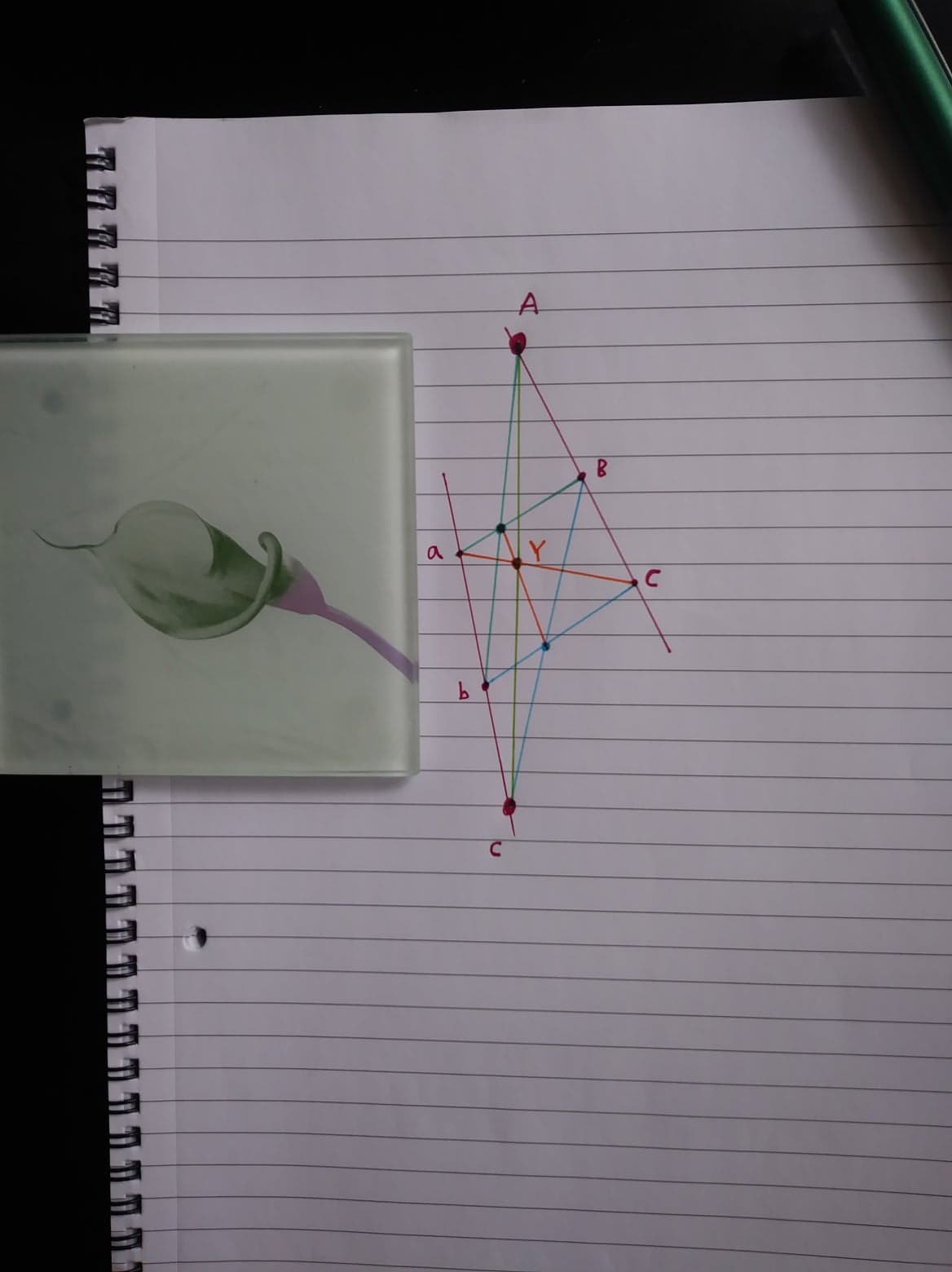A bounded-length straightedge can emulate an arbitrarily large straightedge (even without requiring any compass), so the rusty compass theorem is sufficient.
Note that, in particular, it suffices to show that there exists an $\varepsilon > 0$ such that a straightedge of length $1$ is capable of joining two points separated by any distance $\leq 1 + \varepsilon$ (and therefore emulates a straightedge of length $1 + \varepsilon$, and therefore arbitrarily long straightedges by iterating this process).
We can use Pappus's theorem to establish this result for any $\varepsilon < 1$:
https://en.wikipedia.org/wiki/Pappus%27s_hexagon_theorem
In particular, given two points $A$ and $c$ (separated by a distance slightly greater than 1) which we wish to join, draw a line $g$ through $A$ and a line $h$ through $c$ which approach relatively close to each other. Then add arbitrary points $B, C$ on $g$ and $a, b$ on $h$ such that the four new points are within distance $1$ of each other and the two original points. We assume wlog $b$ is between $a, c$ and $B$ is between $A, C$.
Then we can construct $X$ by intersecting the short (length $< 1$) lines $Ab, Ba$, and construct $Z$ by intersecting the short lines $Bc, Cb$. Then $Y$ can be constructed by intersecting the short lines $XZ$ and $Ca$.
Now, $Y$ is positioned collinear with $A$ and $c$ and between them, so we can use it as a 'stepping stone' to draw a straight line between $A$ and $c$.
The result follows.
EDIT: I decided to do this with the edge of a coaster and two points slightly too far apart to be joined directly:

